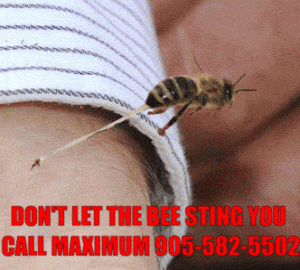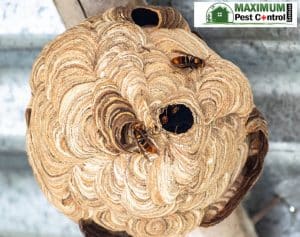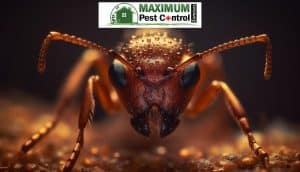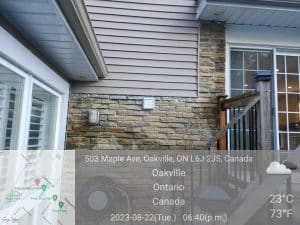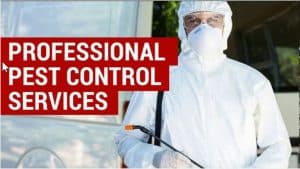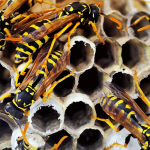
Safeguard Your Home With Wasp Control Services
Why Wasp Control Services is Important? Wasps can be a nuisance, especially during the summer months when they are looking for food and shelter. If they find their way into your home or garden, it can be difficult to remove them without disturbing their nests. At Maximum Pest Control Services, we provide effective wasp control measures that will ensure your home is free of pesky wasps for good!
We offer an array of affordably priced services designed to limit the infestation and eliminate all traces of activity in susceptible areas such as eaves, roof overhangs, and other hidden places where wasps might take refuge. Our team has vast experience in removing these unwelcome guests safely without causing any kind of collateral damage to property or persons nearby. Reach out today for complete peace-of-mind against unwanted pests!
What Do Wasps Look Like?
Wasps are often seen throughout the summer months buzzing around flower beds and gardens. They typically have slender bodies with wings that fold back when they’re resting or nesting. Wasps often come in bright colours, like yellow and orange, but there is some variety between species.
The term ‘wasps’ can mean many different insects from several families of Hymenoptera – a type of insect characterized by their long antennae and two pairs of wings. Most wasp species produce this intricate paper-like nests around which activity abounds during active seasons. Some mix mud and other substances to construct nests, while others prefer to use plant fibres as opposed to mud’s for their shelters’ construction. Seen up close, wasps feature grotesquely beautiful facial features complete with bulging eyes, razor sharp mandibles or pincers along the lower jaw. The bodies can be shiny and metallic, clinging to plants with powerful claws as they forage. A combination of bright colours often marks especially dangerous species of wasps, able to cause significant pain from a single sting.
Are Wasps a Problem?
Yes, wasps are definitely a problem. Wasp stings can be painful and sometimes even dangerous. As these insects become more active during summer months, their risk of encountering humans also increases significantly. People who are allergic to the venom in a wasp sting need to take special precautions against potential stinging incidents.
Most people also don’t appreciate having wasps buzzing around their homes and other structures. They threaten any outdoor activities or gatherings that could interfere with them nesting in those areas nearby. The most effective way to deal with troublesome wasps is usually by removing or blocking access points, such as holes or cracks leading into walls where the pests live and breed.
Another way of controlling the population of wasps is through traps baited with sweet food like jams or syrups that attract them before entrapping them within its container, while keeping pets and children safe from harm. With all this said, everyone should have an idea about how big role these insect play when it comes to controlling pest populations. However, always keep safety in mind when dealing with aggressive ones!
Signs of Wasp Infestation
If you think you may have a wasp infestation, there are some sure signs that will alert you to an unwanted colony. The first thing to look for is wasps gathering in groups near your property – these could be the same species or different ones. You might also find nests either attached to structures on your house, business building, or hanging from trees and shrubs. Wasps like darker, sheltered places so they’ll often build their nest in places such as corners of windowsills, underneath decks or around electric outlets.
Another indication of a possible wasp infestation is if the winged insects seem overly interested in entering into buildings through cracks and crevices. This can mean they’ve already set up home inside and are actively trying to gain access for food or water sources nearby. If you see lots of activity near entrance points during summer months, then it’s definitely worth investigating further.
To confirm the presence of a nest on your property, examining droppings around window sills and eaves helps with identification purposes. Certain species leave tell-tale signs which will indicate the type of wasps present among other useful information about size and population levels present. By spotting these clues early, homeowners can take action right away before things get out of hand!
Identifying Potential Wasp Nesting Areas
Wasps can make their homes near human habitations, and it’s important to be aware of where they like to nest. Wasp nests tend to develop in the same areas every year, so trying identify potential ones is key. All wasp species flourish in warm, sheltered spots that experience little or no interruption.
Wooden structures such as barbecue decks are popular nesting grounds for wasps because they provide plenty of shelter from predators and bad weather. Areas used by humans may also have fallen into disuse over time due to environmental change, providing an ideal landing place for travelling wasps seeking a new home territory. The cavities between roof tiles on older buildings with aging gutters can accommodate felled egg sacks filled with several hundred larvae that yet to hatch – a warning sign of an imminent nest.
Gardens typically contain the most common forms of suitable nesting sites for wasps; hollow trees, tree stumps and piles are all natural places they find secure enough for colonies and which attract them from outside sources. Adequately sealed compost heaps will also become havens at certain times of year. Thus, the presence of various types wasp is an indication that their nests lie close by.
Safe Techniques for Wasp Removal
The first and most important step to safely removing wasps is to make sure that any area being worked on has been blocked off from the public. Once an exclusion barrier has been created, it’s time to start eliminating the wasp problem. The best way of doing this is through a combination of traps or repellents as well as other physical removal techniques like vacuuming or netting them up for relocation.
Traps can be designed with bait which attracts the wasps inside, where they will get stuck and eventually die. Some forms of non-toxic repellents can be used around areas where activity seems to occur in order to discourage further nesting activity. The use of pesticides should also always be avoided if possible because it rarely solves the problem long-term, and may even lead to more complications – especially if applied incorrectly!
Finally, it’s important to note that using an integrated pest management system is often the most effective solution of reducing and eliminating wasp populations over time. This approach incorporates prevention and control practices, which work together in order to create long-term success. Knowing and understanding what attracts these pests can help you take preventive measures in the first place. Therefore, practising proper food storage or cleaning areas where activity occurs are just as important as physical removal methods!
Simple Measures to Discourage Wasps Nests
Maintaining a clean environment is the first step in discouraging wasps from nesting on your property. Keeping food scraps and garbage bins sealed tightly, regularly cleaning up any spilled drinks or juices near drinking areas; this will instantly reduce and repel wasp activity in the area. Moreover, keep doors and windows well-screened to prevent insects from entering your home.
You can get rid of existing nests by using strong-smelling substances such as ammonia or menthol crystals around nesting sites to deter them away due to their sensitive sense of smell. Additionally, plant some herbs like mint, eucalyptus trees or wormwood around your house that have natural repellents constituents, which can further help keeping these flying pests at bay.
If all else fails, then you may have to hire pest control services for removing wasps nest, especially if it is too high above ground level. Experienced experts will know exactly how to handle these aggressive creatures without harming anyone. This measure should always be used when there’s an imminent danger!
Can I Remove the Wasp Nest Myself?
Removing a wasp nest can be dangerous and it is always best to call an experienced professional. DIY attempts are highly not recommended as the chances of getting stung or even injured are higher. Pesticides that one may use can also contain hazardous chemicals which pose dangers for people, pets, and plants around them.
Furthermore, often the nest can be hard to reach. An experienced professional would have specialized tools that they use for these kinds of situations, which make removing the nest safer and more successful. Therefore, it is always recommended to call someone who has experience dealing with this so they can safely remove the nest quickly.
Final Thoughts By Maximum
Wasp control services is essential to ensure homes are safe and secure from these pesky insects. Professional wasp control services can help identify the source of the infestation, and address it quickly and effectively. These services also provide preventive measures that will protect against further infestations so homeowners can enjoy their home insect-free for years to come. With a commitment to quality and reliable customer service, utilizing professional wasp control services guarantees peace of mind and a safer living environment for all. Connect With Maximum Pest Control Services (905) 582-5502.

